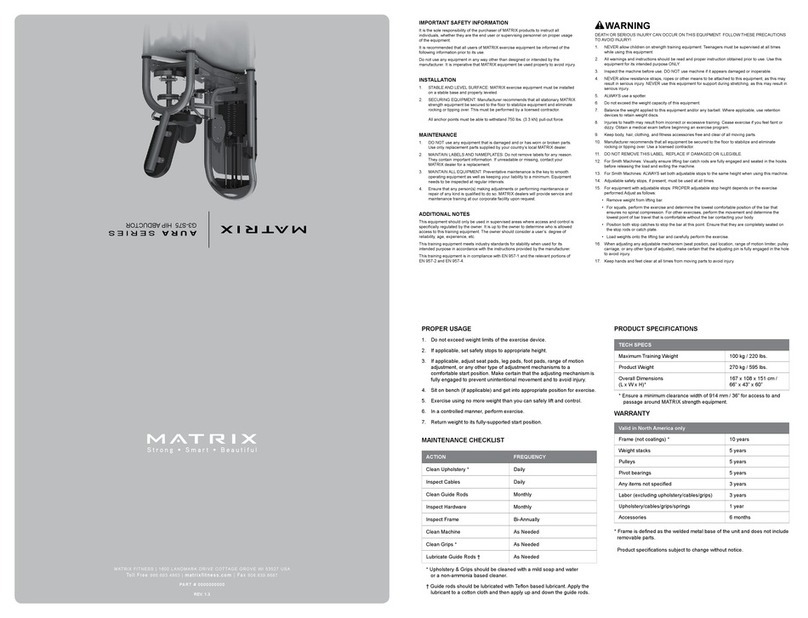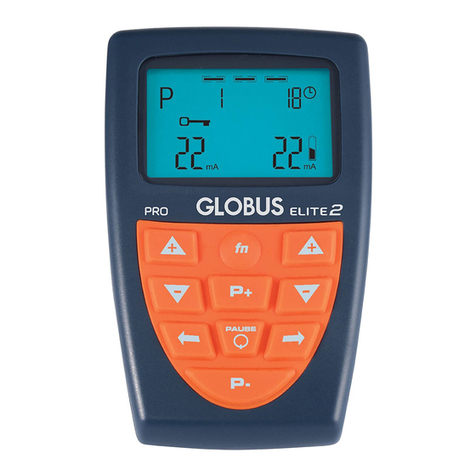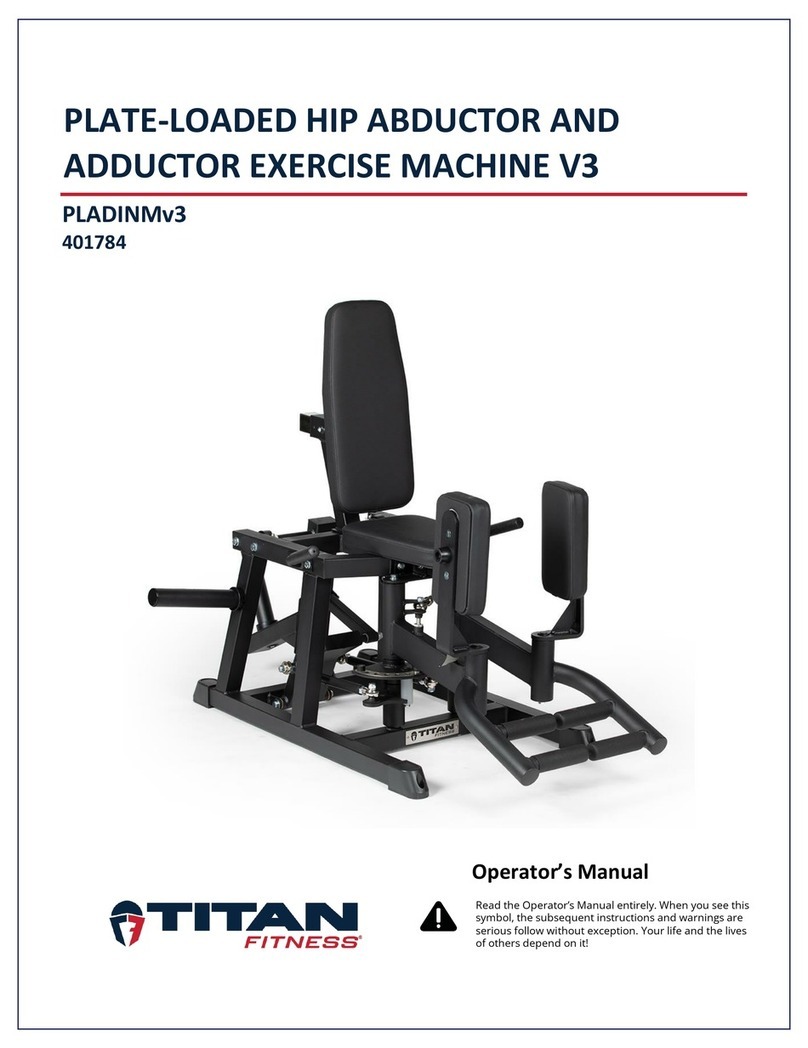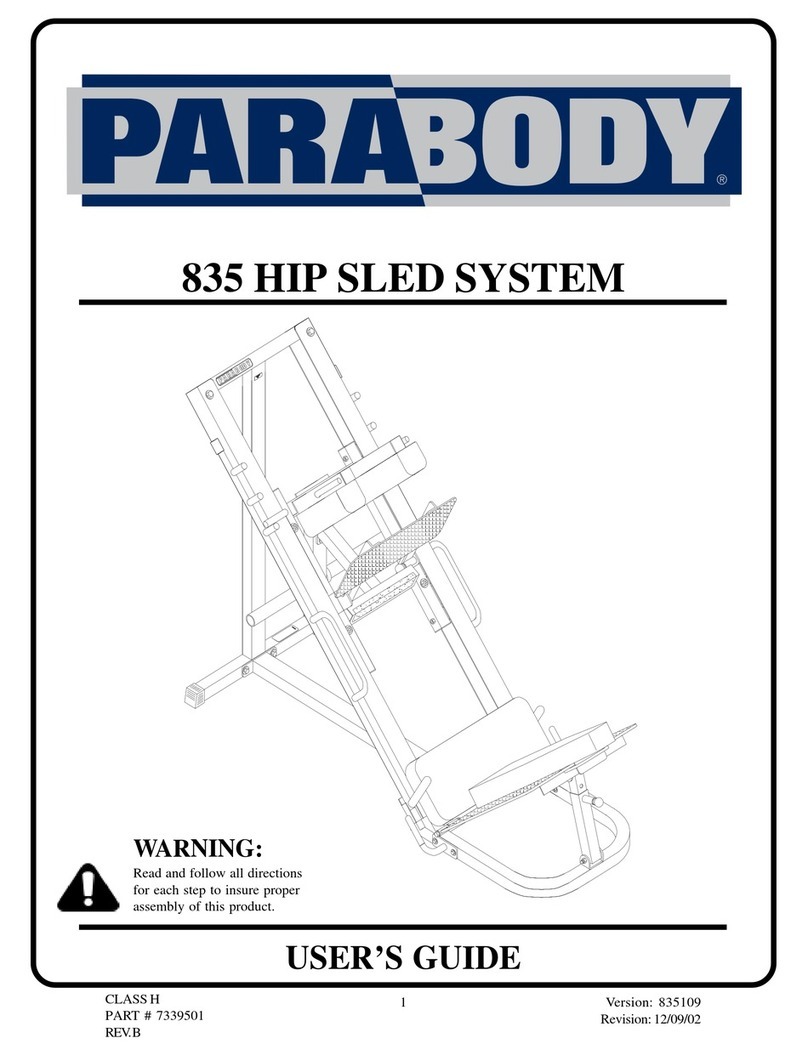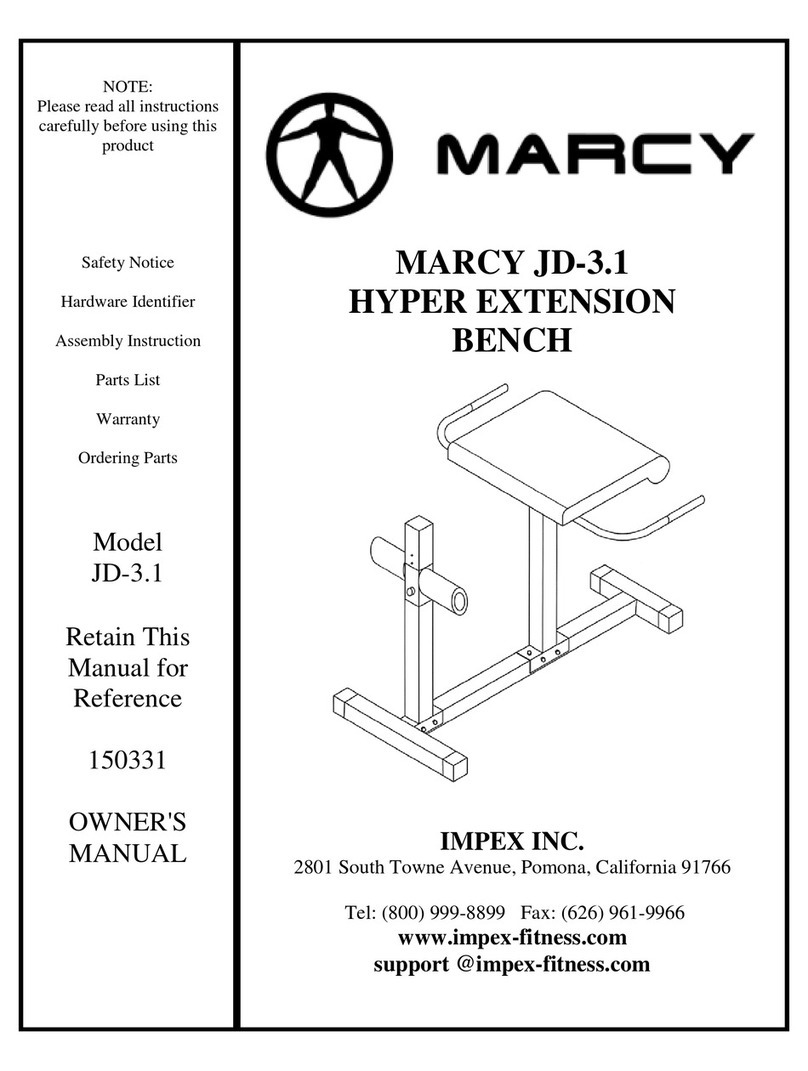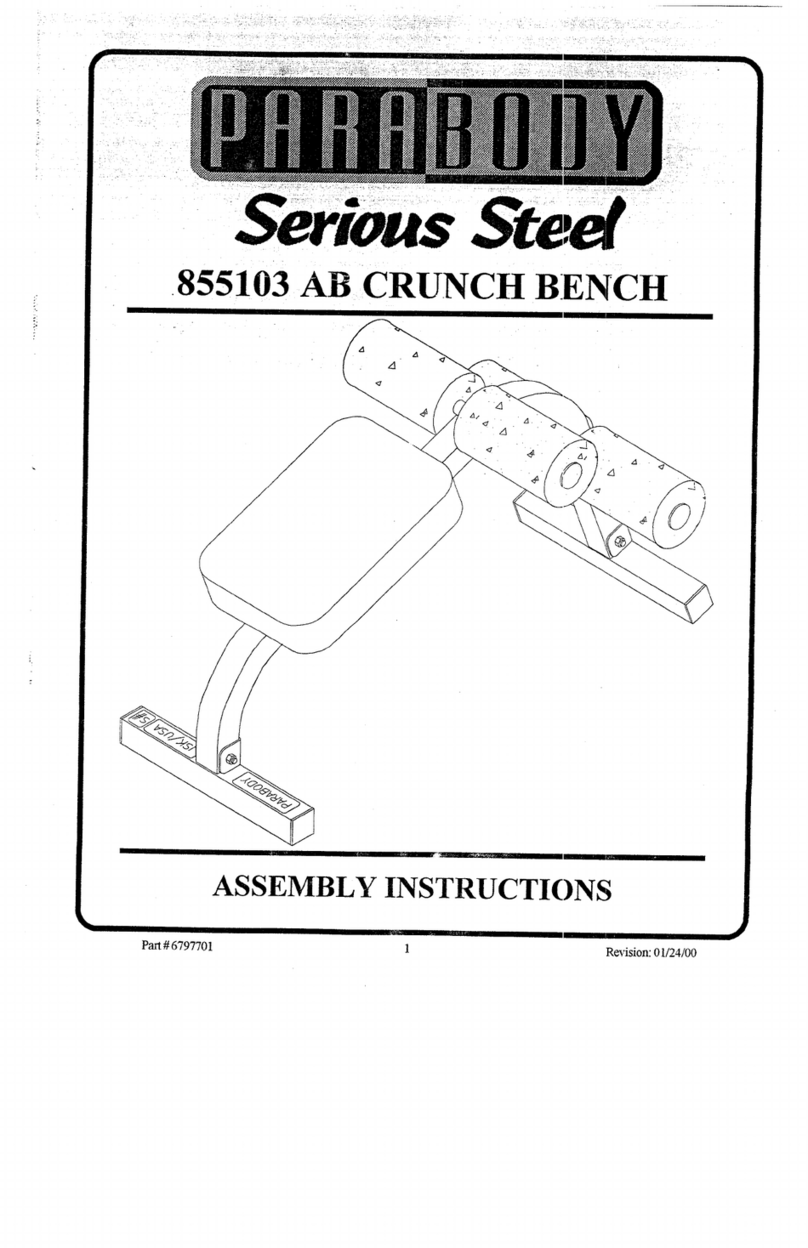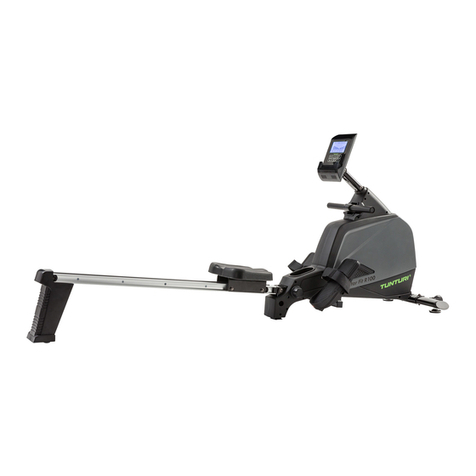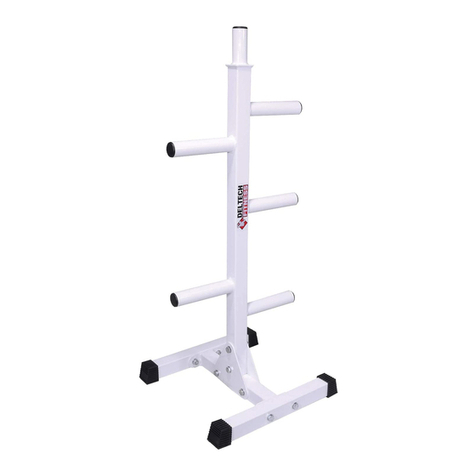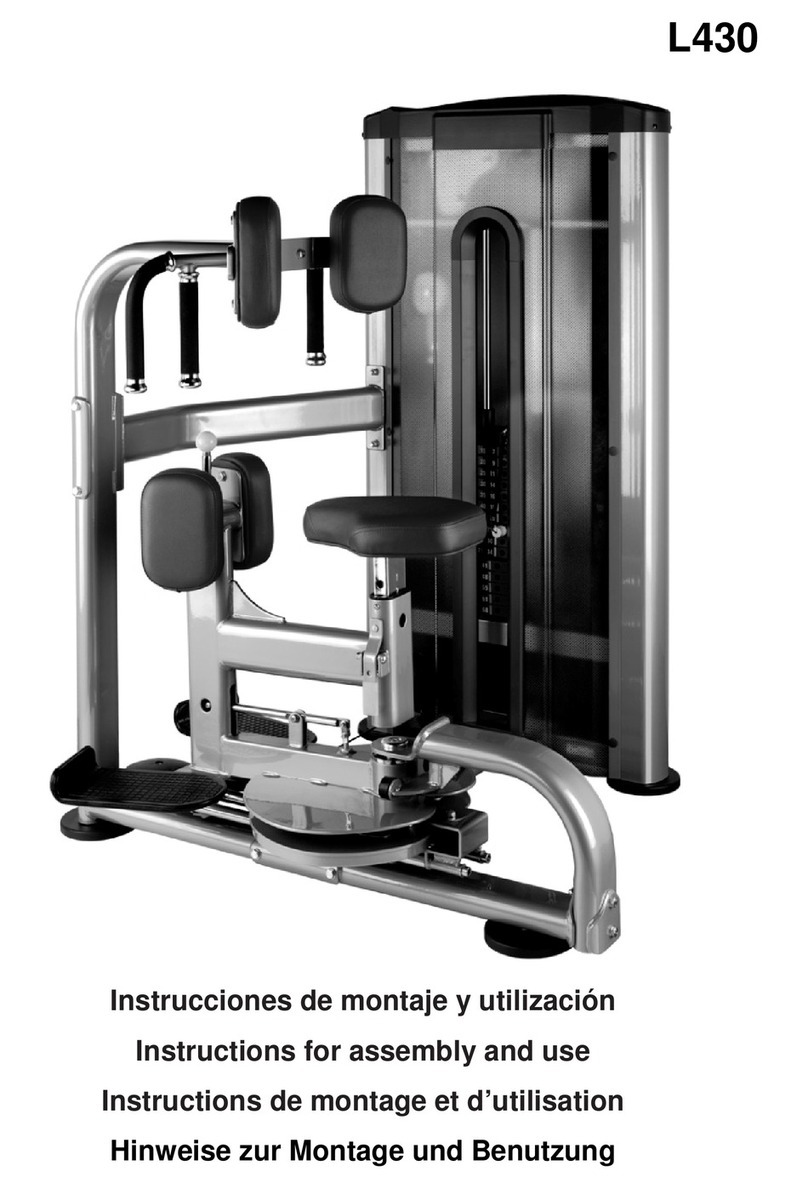Birthways Empathy Belly Installation guide

The Empathy Belly®
Instructor Training Manual
“How to use and demonstrate
“The Empathy Belly”® Pregnancy Simulator
PLEASE NOTE:
To realize the maximum benefit from The Empathy Belly®, it is ESSENTIAL that you read this
manual, and learn to use the product correctly. You should also view the sample demonstration
video tape that was shipped with this product.
The effective presentation of this teaching resource depends on YOU!
* * * Keep for future reference * * *
Published by Birthways, Inc. © 2013

Introduction
1
Introduction
“The Empathy Belly”®
Pregnancy Simulator (U.S. Patent 4,531,919) is a multi-component,
weighted “garment” that will, through accurate simulation, enable female and male wearers to
temporarily experience more than 20 of the typical symptoms and effects of pregnancy. Through
this hands-on, experimental type of learning, wearers discover what it feels like to be pregnant,
and gain a realistic understanding of the pregnant condition. Following are some of the symptoms
and effects that can be felt by wearing The Empathy Belly® for 10 minutes or longer:
•
body weight gain of 30 to 33 pounds (13.6 to 16 kg)
•
pregnant profile of enlarged breasts and protruding abdominal belly
•
changes in physical and personal self-image
•
continuous pressure on the abdomen and internal organs
•
postural changes of the back with an increase of lordosis or "pelvic tilt"
•
shift in one's center of gravity
•
low backache
•
mild "fetal" kicking and stroking movements
•
shallow breathing capacity and shortness of breath
•
increase in body temperature, pulse and blood pressure
•
a flushing sensation and increased perspiration
•
awkwardness in all body movements
•
pressure on the bladder, with increased sense of urgency and frequency of urination
•
increased fatigue, slowed pace and restricted activity
•
changes in sexual self-image and abilities
The Empathy Belly® simulates these effects through the use of a rib belt and the strategic
positioning of various weighted components. It is a strictly external garment, and does not have
any mechanical, electrical or electronic components.
Sizes
The Empathy Belly® comes in two sizes. Be sure to choose the appropriate size Empathy
Belly® for the volunteer(s) you will have. The small size fits most women, men of small stature,
and most teenage girls and boys, ages 12 to 18. The large size is designed for men of average
or above-average size, or older teenage boys who have the build of an adult male.
The Empathy Belly should not be used on anyone weighing less than 100 lbs. (45 kg) or
more than 300 lbs. (136 kg).
Why Use The Empathy Belly®?
The Empathy Belly® was originally created to simulate pregnancy in a medically accurate fashion.
It was designed to help expectant fathers understand the increased needs of their partners, as a
result of the demands of the pregnant condition. Use of The Empathy Belly® has been expanded
to the teenage community. As a teaching tool, it enables teenagers to understand and evaluate
the pregnant condition, as measured by their own values. Through simulation, they are able to
understand the impact on the things important to their teenage lifestyles.

Introduction
2
For Men
Many expectant fathers naturally feel a sense of detachment, curiosity, skepticism or frustration
as they listen to descriptions of all the changes and discomforts their pregnant partner is
experiencing. During a childbirth class, a couple’s counseling session, or a prenatal checkup in
a physician's office, expectant fathers can wear the Empathy Belly® and greatly increase their
sense of involvement, awareness, and empathy. Realizing firsthand that her discomforts are
genuine and that pregnancy requires significant effort and adjustment on the woman's part,
expectant fathers invariably increase their appreciation, communication and supportive behavior
towards their pregnant partner.
For Teenagers
As an action-oriented, hands-on teaching aid for teenagers, The Empathy Belly® can be used
not only to educate, but also to help reduce our nation's current epidemic of teenage pregnancy
and parenting. In a counseling setting or during a school Health or Family Life class, girls and
boys can wear The Empathy Belly® and discover for themselves the many "price tags" or
negative consequences that a pregnancy would impose on their lifestyles. This realism quickly
shatters their romantic illusions and typical adolescent feelings of invincibility regarding teen
pregnancy. Teens can begin to really see why the inevitable demands of pregnancy require
mature, committed marriages and responsible support systems, if childbearing is to be the joyful,
positive experience that it can be. Skillful use of the Empathy Belly® not only increases
adolescents' knowledge and communication, and clarifies values, but also motivates teenagers
to prevent untimely pregnancy.
For Health Care Providers
The Empathy Belly® is useful for medical students, obstetrical physicians and allied
professionals in the fields of Maternity Health Care and Education. By wearing the Empathy
Belly® they significantly increase their understanding and sensitivity about the pregnant
condition. Consequently they are better trained, more effective, and more likely to establish
genuine rapport with the pregnant women in their care. For obvious reasons, this is especially
true for service providers who are male, or women who have never experienced a full-term
pregnancy.
Background
“The Empathy Belly”® Pregnancy Simulator was invented by Linda Ware, B.S.W., who is
the Founder and Executive Director of Birthways Childbirth Resource Center, Inc. She
has also been a Social Worker and teacher with The Neighborhood Youth Corps, and a
Maternity Specialist with the Salvation Army Booth Memorial Home. As a childbirth
educator, counselor and birth assistant for more than twelve years, Ms. Ware has worked
intimately with thousands of pregnant women and expectant fathers. Based on the
knowledge she gained from such extensive experience and her own pregnancy, the
innovative concept of The Empathy Belly® was developed. The results of five years of
field testing and numerous professional evaluations, including a safety analysis by the
National Institute of Occupational Safety and Health, have demonstrated that The
Empathy Belly® is a highly effective, beneficial and safe teaching aid when used
correctly.

Introduction
3
Components
The Empathy Belly® consists of seven components, as illustrated in Figure 1.
The Instructor Training Manual
This manual is organized in three sections:
•
Assembly -assembling the water-filled belly;
•
Demonstration -procedure for a live demonstration;
•
Appendix -necessary forms, cleaning and repair information.

Assembly
4
PLEASE NOTE:
Assembly Instructions for the Empathy Belly®
PLEASE NOTE:
To realize the maximum benefit from The Empathy Belly®:
It is ESSENTIAL that you practice both assembly and demonstration prior
to introducing the Empathy Belly to clients or students. You should also
view the sample demonstration video tape that was shipped with this
product.
The effective presentation of this teaching resource depends on you!
After familiarizing yourself with the names and functions of the Empathy Belly®
components shown in Figure 2, you are ready to assemble the water-filled “pregnant
belly” of the torso garment.
To do this, you should have:
1.
a clean counter area to work on
2.
a water source with hot water
3.
a funnel or watering can with a narrow spout
4.
an accurate measuring container (cups or liters)
5.
paper towels or cloth for wiping up water spills
6.
the torso garment
7.
the vinyl abdominal bladder

Assembly
5
To assemble the torso garment:
1. Lay the torso garment inside out, as shown in Figure 3.
2. Open the zipper inside the circular "belly.”
3. Make sure the bladder is positioned with the water spout located closest to you, inside the
canvas "belly" abdominal cavity of the torso garment.
4. Line up the 2 x 3 inch (5 x 7.5 cm) black Velcro® rectangle on the back of the vinyl
abdominal bladder, with the Velcro® rectangle inside the abdominal cavity of the torso
garment.
These two rectangles must be lined up accurately, with a "mirror image fit" to each other, because
they suspend the internal pendulum which simulates fetal kicking and stroking movements.
5. Position the bladder to lie as flat and smooth as possible within the canvas
abdominal cavity.
6. Reach into the canvas abdominal shell and find the
two 8" pockets that extend from the upper edges of
the belly.
The pockets look like round cloth tabs from this side
of the belly.
7. Lay the pockets flat on top of the vinyl bladder,
inside the canvas shell (Figure 4).
This will put the pockets in the correct position to
"receive" the two 7lb balls (inserted later), and
protect the bladder from damage by the zipper.

Assembly
6
To fill the vinyl bladder:
1. Pull up firmly on the spout until it protrudes
about 2 inches (5 cm) from the vinyl surface (Figure 5).
2. Unscrew the cap.
3. Measure and pour very warm water
(less than 100°F or 38°C) into the vinyl
bladder through the spout opening.
•
For the small size Empathy Belly®, measure 15 cups
(3.5 liters).
•
For the large size Empathy Belly®, measure 20 cups
(4.7 liters).
A torso garment that has been used repeatedly will have
stretched, creating a slightly larger belly. When this happens,
you will need to add 2 to 4 additional cups (.5 to 1 liter) of water to the
vinyl bladder in order to achieve a realistic pregnant profile. (See "Judging the correct 'belly' profile"
on page 8.)
Be sure to measure accurately, so the resulting simulation will be correct.
With practice you will be able to estimate the correct amount of water without measuring.
Your funnel or watering can will minimize spills.
5. Slowly push down on the spout until the water level rises to the rim.
6. Screw on the cap, making sure it is very tight.
If a leak occurs later, it is usually because this cap was not screwed on tightly enough.
7. Pull up on the spout to bring any trapped air to the top of the bladder.
If any air is still trapped in the bladder, remove the outer cap and inner plug, push down on the
spout again to remove the trapped air, and replace the plug and cap.
8. Push the spout back to its original position, lying flush with the vinyl surface.
NOTE: It is strongly recommended that you empty and refill the vinyl bladder with very
warm water prior to each demonstration, to realistically simulate the natural
warmth of a pregnant woman's abdomen. (It also would be uncomfortable for the
wearer to feel cold water against their abdomen.)
If this is not practical, you may leave the bladder filled with water; to retard fungal
growth, be sure to use the water conditioner included with this kit (114 teaspoon
per full belly).
If emptying and refilling the bladder for each demonstration is not practical, you
can also:
•
Store the torso garment in a warm location, perhaps on a heating pad set on
LOW, or
•
Partially empty the bladder and refill it with hot water, to bring the overall
temperature back up to normal body temperature.

Assembly
7
Assembly
To complete the Empathy Belly® assembly:
1. Check again to make sure the two canvas
pockets are laying flat on top of the water-
filled vinyl bladder (Figure 4).
2. Close the zipper, to encase the vinyl bladder
securely within the abdomen.
3. Hold the torso garment securely against your
own body, holding one arm under the breasts of
the torso garment, with the other hand pulling the
bottom edge firmly against you (see Figure 6).
4. Inspect your image in a mirror. Check to see
that you have the correct "pregnant profile"
(see Figure 7).
When properly filled, the belly should have a slightly
”flat” area on top.
•
Too little water will cause it to droop
excessively.
•
Too much water will create a round surface that is "too full," and won't allow you to
insert the two lead balls into the pockets during the demonstration.
If the canvas appears wrinkled or badly puckered, reopen the zipper and reposition the vinyl
bladder so it lies more smoothly within the canvas shell.
5. If necessary, reopen the abdominal shell and adjust the amount of water.
Add or pour out excess water as necessary to achieve the correct “profile.”
Congratulations! You have filled the "belly" with 8 or 11 pounds (3.6 or 5 liters) of water, and are
ready to proceed with a live demonstration.

Demonstration
8
Live Demonstration of the Empathy Belly®
Time Required
When demonstrating the Empathy Belly®:
•
In a classroom setting, allow approximately 30 minutes for a complete demonstration.
-Allow an additional 10 minutes for a second volunteer to wear "the belly" at
the same session.
-Additional time can be allowed for follow-up discussion, depending on the
curriculum.
-Future class meetings with the same group will require less time, since the
full introduction and explanations won't be necessary. You will simply put
the Empathy Belly® on another student.
•
In a one-on-one situation such as a medical or counseling session, or in a large group
presentation where time is limited, allow 15 minutes for a more succinct, rapid
demonstration.
This is only recommended once you have had sufficient experience demonstrating the
Empathy Belly®, and are able to quickly and easily move through the required steps.
Empathy Belly® Sizes
The Empathy Belly® comes in two sizes. Be sure to choose the appropriate size Empathy Belly®
for the volunteer(s) you will have.
•
The large size is designed for men of average or above-average size, or older
teenage boys who have the build of an adult male.
•
The small size fits most women, men of small stature, and most teenage girls and boys,
ages 12 to 18.
If you are unsure, the size is shown on the care label sewn inside the garment.
REMINDER: The Empathy Belly® should not be used on anyone weighing less than 100
lbs (45 kg) or more than 300 lbs (136 kg).
Materials Required
To do this demonstration, you should have:
•
a box containing the following:
-typical household items that might be left on the floor, such as shoes, socks, men's
pants, newspapers, books, bath towels, children's toys
-Empathy Belly® components, placed in the box in this order (so the rib belt can
come out first):
a. maternity smock
b. two 7lb balls
c. bladder pouch
d. torso garment, containing the water-filled vinyl bladder
e. rib belt (with the caution label visible)
•
five bed or floor pillows
•
cleared floor area, large enough for the volunteer to lay down on the floor (ideally at least
100 square feet (13 square meters))
•
large wall mirror (could be in nearby restroom)
•
sofa or upholstered chair (optional)
•
desk with chair, or student desk and chair when working with teens (optional)

Demonstration
9
A.
Introduce the Empathy Belly®
Briefly explain what the Empathy Belly® is, its purpose and benefits. (Refer to the Introduction
in this manual.)
B.
Select a volunteer
•
When demonstrating the Empathy Belly® on an adult, ask for a volunteer to wear it. Ask
him or her to silently read and complete the lnformed Consent Release
(see the Appendix).
•
If the volunteer is a minor, the lnformed Consent Release must be completed by his/her
parent or guardian prior to the demonstration.
You should have already signed and dated the Supervising Instructor section on
page 2 of the form.
C.
Explain anatomical chart
Refer to the various anatomy changes shown in the Third Trimester chart included with
this kit. Focus on briefly explaining the physiological changes and pregnancy symptoms
that will be simulated by the Empathy Belly®.
The physiological changes and their symptoms are:
•
Increase in size of uterus; typical weight gain of 30+ pounds (13+ kg), causing:
-Increased fatigue
-pressure on internal abdominal organs and pelvic floor tissues and nerves
-round ligament twinges
-edema (swelling) and aching of legs and feet
-pull on uterosacral ligament, causing lower backaches
•
Fetal head on bladder, causing:
-constant bladder pressure
-frequency of urination
-urine leaking

Demonstration
10
•
Crowding of small intestines and stomach, combined with hormonal changes, causing:
-fullness and discomfort after eating small amounts of food
-heartburn
-constipation
-gas
•
Displacement of heart and upward pressure of the fetus on the diaphragm and lungs,
causing:
-difficult and shallow breathing
-smothered feeling
-reduced oxygen intake with resulting fatigue, slowed pace, restriction of
physical activities
-increase in body temperature
-increase in pulse and blood pressure
-lifestyle changes
•
Change in center of gravity, along with changes in spinal alignment, resulting in an
increase in lordosis (normal curvature of lower spine) and pelvic tilt, causing:
-frequent backaches
-overall posture change
-"waddling" gait
-need for caution during any kind of movement
•
Pressure points of fetal knees, elbows and feet, causing:
-aches and pains in ribs and abdominal organs
•
Fetal movement, causing:
-strange sensations of stroking and kicking against abdominal wall and outer belly
•
Breast enlargement and protruding profile, causing:
-change in self image
-change in sexuality
-awkwardness in movement and normal activities

Demonstration
11
D.
Prepare the volunteer.
•
Examine and approve the volunteer's completed Informed Consent Release to
ensure that he or she is in normal, good health, with no medical condition that could
result in a health risk.
•
Make sure that the form has been signed on the back (by the parent or guardian if the
volunteer is a minor).
•
Review out loud the “DOs and DON’Ts”and on the warning label (Figure 9) which is
sewn on the rib belt.
E.
"Install" the five Empathy Belly® components on the volunteer.
NOTE: If the two lead balls have been left in the torso garment, remove them now.
As you attach each component in the following sequence, ask the volunteer open-ended
questions to find out what he or she is feeling, both physically and emotionally. Try to draw out
the specific symptoms discussed earlier, as they might apply to each step.
CAUTION: You must be careful at all times not to touch the volunteer in sensitive or
inappropriate areas, such as the breasts, lower abdomen, groin area or
buttocks. Have the volunteer position any components on these areas.
RIB BELT simulating the pressure of the ascending uterus and fetus against the diaphragm,
heart and lungs.
•
Specific symptoms: difficult and shallow breathing, smothered feeling, reduced
oxygen intake with resulting fatigue, slowed pace, restriction of physical activities,
increase in body temperature, and increase in pulse and blood pressure.
1. Pick up the rib belt, and position yourself by the volunteer.
•
If the volunteer is female, stand behind her.
•
If the volunteer is male, stand in front of him.
2. Wrap the rib belt loosely around the volunteer, making sure the warning label faces
outward, with the widest edge of the elastic insert at the top (see Figure 10).
When putting the belt on a female, quietly ask her to position it just under, not over her
breasts, with the elastic band in front.
When putting the rib belt on a male, position it just under the armpit level, with the elastic
band in back.

Demonstration
12
3. Have the volunteer stand with knees bent and feet apart, to help keep his or her balance.
4. Tell the volunteer to drop his or her arms to their sides, and relax. Then instruct the
volunteer to inhale deeply, and exhale as completely as possible, totally emptying his or
her lungs.
5. Quickly pull the belt as tight as possible, overlapping the ends and fastening the Velcro®.
6. Ask the volunteer to try to take another deep breath.
•
If he or she reports that their breathing is "strained, shallow, restricted, or tight," or that he
or she can only get "half a lung full of air," the belt is positioned correctly.
•
If the volunteer says his or her breathing is the same, undo the rib belt and tighten it
again, until the desired effect is achieved.
TORSO GARMENT simulating weight and profile of pregnancy, movement of fetus, and
enlarged breasts.
•
Specific symptoms: increased fatigue, pressure on internal abdominal organs and
pelvic floor tissues and nerves, round ligament twinges, edema, aching of legs and
feet, lower backaches, stroking and kicking sensations, changes in self image and
sexuality, and awkwardness in movement.
1. Pick up the torso garment, holding it firmly by the shoulder straps (labeled A in
Figure 11).

Demonstration
13
2. Hold the shoulder straps over the volunteer's shoulders,
while he or she carefully holds the "belly" from underneath.
3. Bring the two underarm straps (labeled B in Figure 11)
around to the back and firmly secure the Velcro® on them
to the Velcro® on the shoulder straps (see Figure 12).
4. Attach the Velcro® of the upper back straps (labeled C in
Figure 12) to each other.
5. Ask the volunteer to release the "belly" and check to see
that the breasts are positioned correctly on the chest.
Reposition all the straps if the breasts appear too high or
too low.
Leave the other four straps (labeled D and E in Figure 12)
hanging unattached for now.
BLADDER POUCH (6 lbs (2.7 kg)) simulating fetal head on bladder.
•
Specific symptoms: constant bladder pressure, frequency of urination, and urine leaking.
1. Ask the volunteer to place the bladder pouch over his or her own
bladder, with the Velcro® side facing out (see Figure 13). You may
have to explain that:
•
The male bladder is located just below his
navel.
•
The female bladder is located just above
her pubic bone.
During this procedure, the instructor must hold the
"belly" up and out of the way, so the volunteer can
locate his or her bladder. The pouch is located correctly
when they feel pressure, or urgency to void (like they
“have to go to the bathroom”).
2. Gently lay the "belly" down over the bladder
pouch, and firmly press to secure the Velcro®.
3. Ask the volunteer "Did we find your bladder?"
If the answer is no, or if they are uncertain,
reposition the pouch.
4. Pull together snugly and attach the mid-back straps (labeled D
in Figure 14), and the lower back straps (labeled E).
NOTE: It is not necessary that the corresponding straps D and E overlap to line up
exactly with each other. It is more important to adjust the straps to tightly hug the
build of each wearer, criss-crossing the straps as needed to do so. This will ensure
that the Torso Garment fits each person as snugly as possible.

Demonstration
14
TWO 7lb. BALLS (7 lbs. (3.2 kg) each) simulating fetal
knees, elbows and feet pressing on internal abdominal
organs.
•
Specific symptoms: aches and pains in ribs and
abdominal organs.
1. Insert the two weighted balls into the side
pockets of the "belly" (see Figure 15).
2. Push each lead ball deeply and securely into
its pocket.
NOTE: To achieve an accurate simulation for
each volunteer, it is very important that
you remove the 7lb balls after each use
of the Empathy Belly®!
MATERNITY SMOCK showing realistic pregnant profile.
•
Specific symptoms: change in self image and sexuality.
1. Place the smock over the head and arms of the volunteer,
OR if you prefer to save time,
undo the Velcro® strip on the back of the smock, letting the volunteer slip it over their front
torso, and fasten the Velcro® in the back.
If time allows, letting the volunteer struggle with the smock may be valuable to further
illustrate the difficulty of performing simple tasks.
2. Pull the smock smoothly down over his or her chest and "belly".
3. Have them observe their new profile in a mirror (Figure 16).
Congratulations! You have successfully installed the Empathy Belly®. Next you will show
your volunteer how pregnancy could affect their daily activities.

Demonstration
15
F. Have the volunteer try various positions, movements and activities
View the accompanying demonstration video tapes to see examples of what questions
to ask and how to do effective role-playing. You will also see typical reactions and
insights of wearers, regarding the impact of pregnancy on their daily lifestyles.
As in the prior segment, continuously solicit feedback from the volunteer, while asking him or her
to do the following:
1. Walk around
2. Observe his or her profile in a mirror
3. Bend down and tie shoes
4. Sit at the desk or table
5. Sit on sofa and/or chair, and student desk/chair if applicable
6. Pick up household items thrown on the floor
7. Lie down on belly, on back, and on side
8. Position five pillows for comfort during sleep
9. Roll over and reposition pillows
10. Imagine partner wants to make love
11. Get up from the floor correctly
G. Conclude the demonstration
Ask for the volunteer's conclusions and new insights about the pregnant condition. Thank him or
her for participating.
If the volunteer wishes, let him or her continue to wear the Empathy Belly® for the remainder of
the class or prenatal appointment.
NOTE: Do not let the volunteer wear the Empathy Belly® for more than 3 hours total,
and remember that he or she must always remain under direct supervision of
the instructor.
Discuss the reactions and comments of the volunteer and the audience.
Carefully remove all the components of the Empathy Belly®:
1. Ask the volunteer to hold the "belly."
2. Support the weight of the garment by holding at least one of the shoulder straps with one hand.
3. With the other hand, undo all the straps, working from the lower back straps up to the shoulder
straps.
4. Move to the front of the volunteer (while still supporting the weight of the garment).
5. Hold both shoulder straps, and slowly move the garment away from the volunteer's body.
Be careful to watch the bladder pouch, and catch it if it falls.
6. Gently set the Empathy Belly® down.
Abruptly dropping the full weighted torso garment on a hard surface could cause damage to the bladder,
such as bruises or pinholes.
7. REMOVE the two 7lb balls, so the next simulation will be accurate.
•
Open the zipper on the inside of the torso garment.
•
Hold up the closed ends of each inside pocket, letting the ball roll into your
other hand.

Demonstration
16
Instructor's Quick Checklist for Empathy Belly®
Demonstration
Before beginning, arrange materials in the proper sequence.
A. Introduce the Empathy Belly®.
B. Select a volunteer, have him or her complete the Informed Consent
Release.
C. Explain anatomical charts and pregnancy symptoms.
D. Prepare the volunteer; check the release form, and review the warning
label.
E. "Install" the five Empathy Belly® components on the volunteer.
1. Rib belt
2. Torso garment
3. Bladder pouch
4. Two 7lb balls
5. Maternity smock
F. Have the volunteer try various positions, movements and activities, to fully
activate the symptoms being simulated.
1. Walk around
2. Observe profile
3. Bend down and tie shoes
4. Sit at the desk or table
5. Sit on sofa and/or chair, and student desk/chair if applicable
6. Pick up household items thrown on the floor
7. Lie down on belly, on back, and on side
8. Position five pillows for comfort during sleep
9. Roll over and reposition pillows
10. Imagine partner wants to make love
11. Get up from the floor correctly
G. Ask for volunteer's conclusions, remove Empathy Belly® components (or
wait until later if preferred), discuss reactions and comments.

Appendix
17
Appendix
This appendix includes:
Informed Consent Release form ......................... page 18
Copyright Release............................................... page 19
Cleaning............................................................... page 20
Troubleshooting................................................... page 21
Warranty.............................................................. page 21
Please visit www.empathybelly.org for more information

Appendix
18
TM
TM
TM
INFORMED CONSENT RELEASE
Based on the results of numerous professional evaluations and extensive field testing, The Empathy Belly®
Pregnancy Simulator (U.S. patent 4,531,919) has been found to be a highly effective, beneficial and safe
teaching aid when handled or worn by individuals who are in normal, good health, and who behave in a
correct and careful manner while handling or wearing this teaching aid. Since you (or your child) are being
offered the educational opportunity to use The Empathy Belly you are hereby provided with full information
regarding this product's intended and potential effects, benefits, avoidable risk factors, and reasonable
precautions to be maintained while handling or wearing this product. As a pre-requisite to handling or
wearing The Empathy Belly , carefully read and complete this form.
Intended for use only as a serious teaching aid, The Empathy Belly®
is a multi-component, weighted
“garment” that will enable male and female wearers to temporarily "experience", through accurate simulation,
more than 20 of the typical symptoms and effects of pregnancy. Through this hands-on, experiential type of
learning, wearers find out what it feels like to be pregnant and gain a realistic understanding of the changes
and demands imposed by the pregnant condition. Following are some of the symptoms and effects that can
®
be felt by wearing The Empathy Belly for 10 minutes or longer: body weight gain of 35 pounds; pregnant
profile of enlarged breasts and protruding abdominal belly; continuous pressure on the abdomen and internal
organs; postural changes of the back with an increase in “pelvic tilt”; shift in one’s center of gravity; low
backache; mild “fetal” kicking and stroking movements; shallow breathing capacity and shortness of breath;
increase in body temperature, pulse and blood pressure; a flushing sensation and increased perspiration;
awkwardness in all body movements; pressure on the bladder, with increased sense of urgency and
®
frequency of urination; increased fatigue, slowed pace and restricted activity. The Empathy Belly simulates
these effects through the use of a “rib belt” and the strategic positioning of various weighted components;
this is a strictly external garment, and does NOT have ANY mechanical, electrical or electronic components.
®
Handling or wearing of The Empathy Belly will be done on a strictly volunteer basis, and will be done only
while under the careful supervision of a trained and authorized instructor.
Individuals who weigh less than 100 pounds (45 kg), or more than 300 pounds (136 kg), should NOT use
this device. Individuals with certain medical conditions or preexisting injuries might be put at risk by handling
or wearing The Empathy Belly®. The following checklist is intended to help identify such individuals who
might be put at risk, and who should therefore NOT use this device. If you (or your child) desire to handle or
wear The Empathy Belly , indicate here if you (or your child) currently have any of the following
medical conditions or health impairments: (Check either YES or NO)
YES NO
1. Confirmed pregnancy, or the possibility of pregnancy.....................................................
2. Chronic back pain, or disorders of your back, spine, neck or pelvis (including, but
not limited to, scoliosis, sciatica, slipped or ruptured discs, etc.).....................................
3. Any fractured or broken bones, or joint dislocations........................................................
4. Any serious strains (muscle-tendon damage) or serious sprains (ligament damage)......
5. Damage or serious weakness in your ribs, knees or ankles............................................
6. High blood pressure, dizziness, fainting or vertigo...........................................................
7. Asthma or any other respiratory disease or breathing difficulty.......................................
8. History of heart problems or disease (including, but not limited to, heart attack,
stroke, angina, etc.).........................................................................................................
9. Epilepsy or a history of convulsions.................................................................................
10. Bladder disorders, weakness or infection........................................................................
11. Any serious abdominal skin bruises, wounds, or recent scars.........................................
12. Any serious weakness or disorders of your abdomen’s internal organs (including,
but not limited to, hernia, enlargement of liver or spleen, infections, etc.) .......................
13. Any other medical condition for which your physician has advised you to avoid
strenuous activity.............................................................................................................
WARNING: Handling or wearing of this product in the presence of any of the above conditions may
cause them to get much worse or may cause injury. If you have answered YES to ANY of the above
questions, if you (or your child) have any other abnormal health condition that you believe might
put you (or your child) at risk, then YOU (OR YOUR CHILD) ABSOLUTELY SHOULD NOT HANDLE
®
OR WEAR “The Empathy Belly”® Pregnancy Simulator.

Appendix
19
TM
TM
®
The weight gain and respiratory changes common in pregnancy (and in the simulation of pregnancy)
naturally impose significant physical demands on the human body. While experiencing any strenuous
activity, especially those involving the handling or wearing of weighted components, there is always the
possibility of a strain-sprain injury, particularly if an individual does not behave cautiously. MISUSE of The
Empathy Belly”®could cause serious, permanent damage. Therefore, to minimize any risk of injury while
wearing The Empathy Belly® the wearer should understand and maintain the following precautions:
1. DO NOT act recklessly or frivolously.
2. DO NOT simultaneously twist side to side while bending over.
3. DO NOT make any abrupt, jerky or swift movements in any direction.
4. DO NOT bend over without bending knees (use squatting position).
5. DO NOT bounce, jump or run.
6. DO NOT wear high-heeled or slippery shoes.
7. DO NOT go on stairs, steep inclines or slippery surfaces.
8. HANDLE CAREFULLY all weighted components of this device at all times.
9. IMMEDIATELY DISCONTINUE WEARING THIS DEVICE if you feel any sharp pain, dizziness or
other adverse effect; consult a physician if necessary.
I have studied and understand all of the teacher training materials provided by the manufacturer concerning
the correct, effective and safe usage of the teaching aid, The Empathy Belly® Pregnancy Simulator. I have
been specifically authorized as a qualified instructor to handle and demonstrate this device. I agree to follow
all instructions and precautions of the manufacturer. I agree to carefully supervise the below named
individual at all times while he/she is wearing The Empathy Belly®
Supervising Instructor's Printed Name Signature Date
I have read and understand the above description of The Empathy Belly® Pregnancy Simulator, its intended
and potential effects, benefits, avoidable risk factors, and the reasonable precautions to be maintained while
®
wearing this teaching aid. I voluntarily agree (or permit my child) to wear The Empathy Belly® for purposes
of my (or my child's) own benefit. I (or my child) agree(s) to follow all instructions and precautions stated
above. I assume all risk and liability for any injury or damage to me (or my child) that might arise out of my
(or my child's) handling or wearing of The Empathy Belly® I hereby release and forever discharge the
manufacturer of The Empathy Belly , the purchaser and the instructor, from all claims of injuries or suits of
any kind arising from my (or my child's) use of The Empathy Belly .
Wearer’s Printed Name Signature Date
(or if a Minor, Signature of Parent/Guardian)
COPYRIGHT RELEASE
Reproduction of this Informed Consent Release in its original form is authorized for use
with The Empathy Belly® Pregnancy Simulator.
To obtain copies of the Informed Consent go to the following web page:
http://www.empathybelly.org/downloads.html
Table of contents
Popular Fitness Equipment manuals by other brands
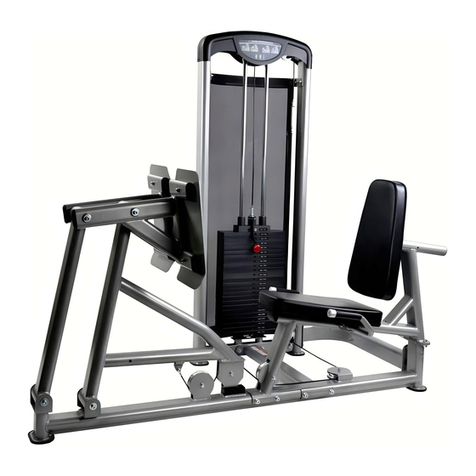
FRENCH FITNESS
FRENCH FITNESS FFS-SLP owner's manual
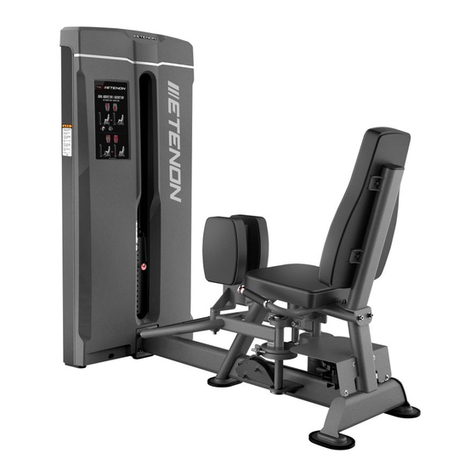
ETENON Fitness
ETENON Fitness Hip Abduction/Adduction owner's manual
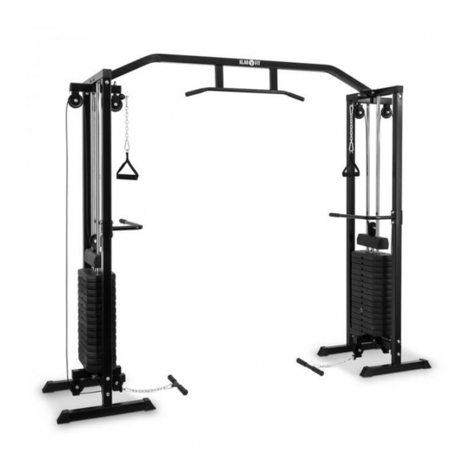
Klarfit
Klarfit Cablefit 10028351 Instructions for use
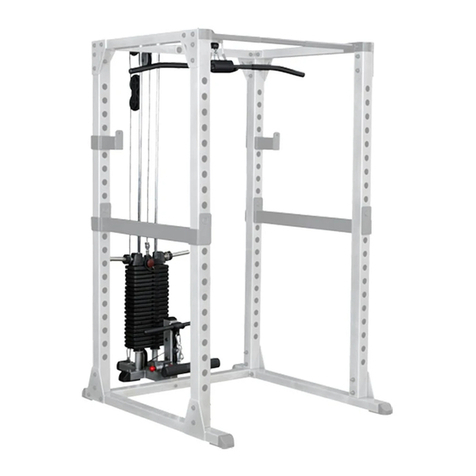
Body Solid
Body Solid GLA378 Assembly instructions and owner's manual
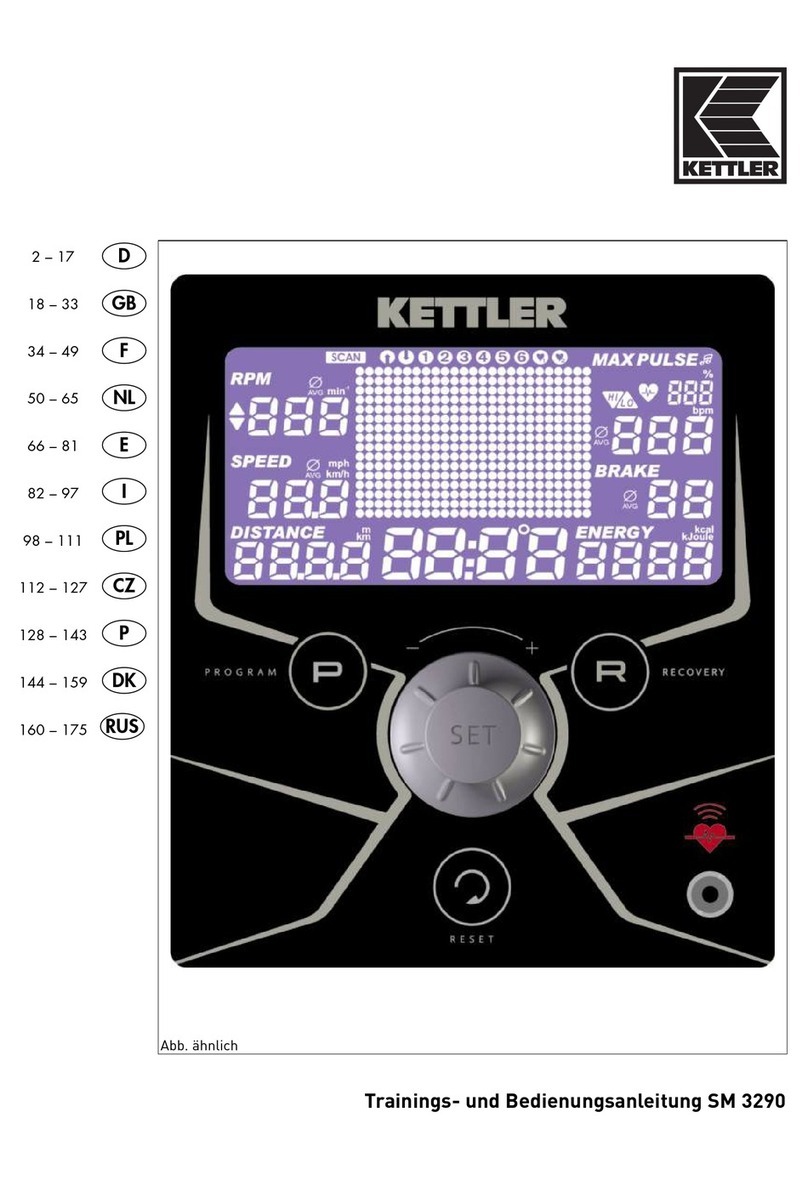
Kettler
Kettler SM 3290 Training and operating instructions
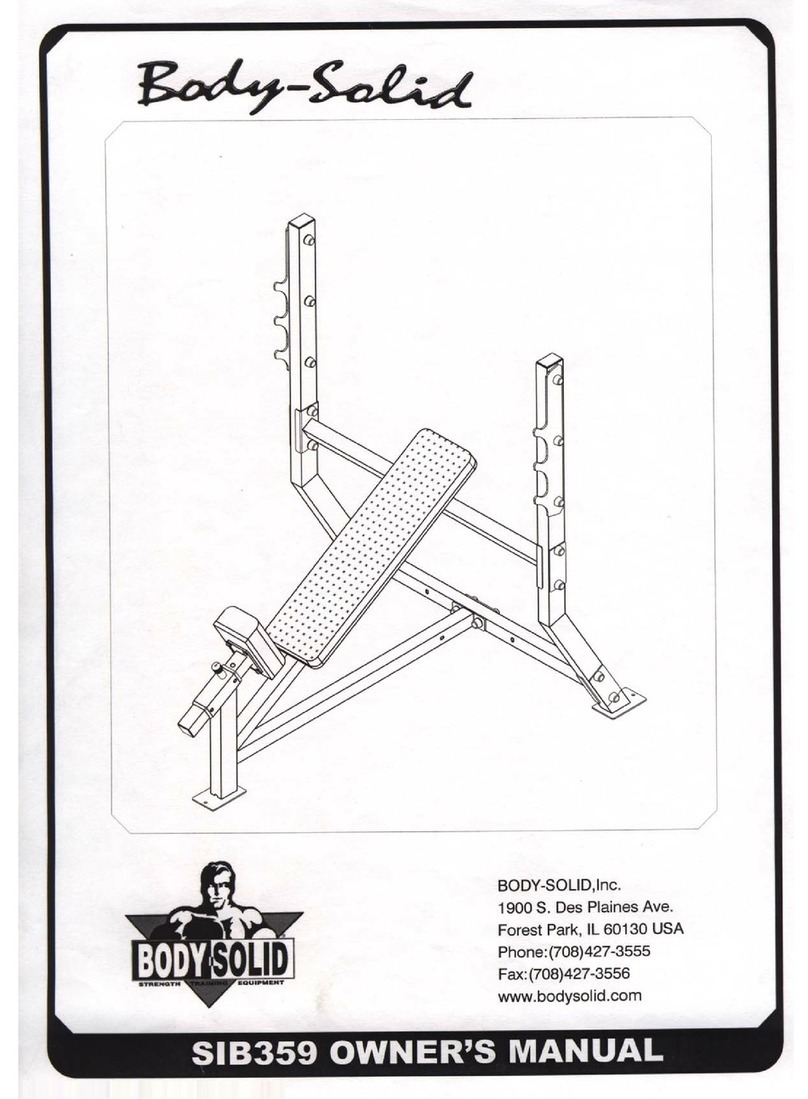
Body Solid
Body Solid SIB359 owner's manual
